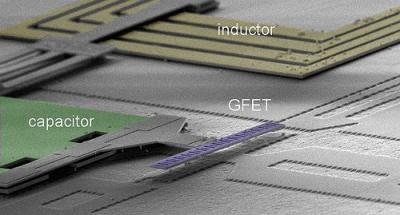The Graphene-Info newsletter (August 2014)
Published: Tue, 08/05/14
New graphene 3D-printing efforts |
In the past few months we've seen great interest in using graphene for 3D Printing. This is being investigated by several companies , including Grafoid, Graphene 3D Labs, AGT, Kibaran and Qingdao Unique Products.
Now two new companies have joined this race. First we have Graphene Technologies and Stratasys, who announced a partnership to co-develop graphene-enhanced 3D-printing materials. Stratasys is a leading 3D printing company, worth over $5 billion, and this effort will be partly funded by the US-Israeli BIRD Foundation.
Germany-based Microdrop Technologies reports that they tested graphene for for applications in micro printing, 3D printing and other related applications - and it exhibited excellent quality and characteristics. The company used graphene provided by Talga Resources.
Graphene Frontiers raises $1.6 million, launches GFET sensors |
Graphene Frontier, spun off from the University of Pennsylvania to develop the Atmospheric Pressure CVD (APCVD) roll-to-roll process, raised $1.6 million in Series Seed B funding. Graphene Frontiers will use the money to hire additional researchers, expand the lab facilities and accelerate the development of their proprietary GFET sensors and manufacturing process.
The company recently launched the "six sensors" brand for highly-sensitive chemical and biological GFET-based sensors. These are especially promising to diagnose diseases with multiple markers such as cancers and illnesses currently diagnosed using ELISA technologies. In November 2013 we posted an article describing Graphene Frontier's technology and business.
IBM to invest $3 billion to find next-gen chip tech |
IBM is an embarking on an ambitious project to find the next-generation chip technology to replace silicon. IBM will invest $3 billion over the next find years in this project. IBM will look into graphene, carbon nanotubes, quantum computing, silicon photonics and other technologies. IBM says that it is getting more and more difficult to shrink silicon chips further and silicon is reaching its limits.
The $600-per year budget will be re-allocated from IBM's existing R&D budget, which is $6 billion a year. So this huge project represents a 10% shift in the company's R&D activities.
Graphene outperform ITO for OLED devices |
Researchers from Philips, Graphenea and the University of Cambridge developed a monochrome OLED device that uses graphene as the transparent conductor layer. They report that the graphene-based TC outperforms that state-of-the-art ITO solutions currently used for OLED panels.
ITO is the most popular material for transparent conductors in displays and solar cells, but it is expensive, rare and brittle, and a lot of companies are developing alternatives - based on silver, carbon or other materials. Graphene by itself is not a good electrode material because the concentration of the charge carriers is low - which means that you need to dope it with excess carriers - while leaving it flexible and transparent. To achieve that, the team used a metal oxide film (molybdenum trioxide, MoO3) as an intermediate layer between the graphene and the OLED layers. The graphene was produced using a CVD process. The researchers were able to achieve excellent power efficiency - better than the ITO reference device.
Top Graphene News |
Graphene enables high-quality GaN on silicon
It was demonstrated that high-quality epitaxial gallium nitride (GaN) can be grown on silicon using graphene as an intermediary layer.
GO is not toxic - we've been eating it for thousands of years
Researchers verified that when you barbecue meat, it produces all sorts of carbon nanoparticles, including graphene oxide - so GO is probably safe to eat - as humans have been eating barbecued meat for thousands of years.
Graphene Nanochem signed the first PlatDrill contract
The initial deal is to deliver about 1,000 tons of PlatDril (a graphene-enhanced drilling fluid), and it is worth $1.7 million.
The original Graphene Aerogel sample sold in an auction for $1.6 million
A sample of the world's lightest material ever (freeze-dried carbon and graphene oxide) was sold in an auction for $1.6 million
Lithium and graphene enable highest performing TCO
Lithium-doped graphene sheets (3-60 layers in thickness) result in the highest ever sheet resistance and transmittance ever reported for continuous thin-films
Send this to a friend |
Do you have a friend or a colleague that might be interested in Graphene technology? Forward this mail to update him on the
world of Graphene.
If you received this email from a friend, subscribe to this
newsletter here!





